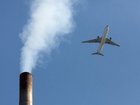Coral reefs in the Maldives are under severe stress after suffering mass bleaching this year as sea temperatures soared, a top conservationist body warned Monday.
 Full Story
Full Story
Imagine one of the largest solar farms ever at the site of the world's worst man-made nuclear disaster that struck Chernobyl in modern-day Ukraine and sowed panic across Europe.
 Full Story
Full Story
Cambodian customs Friday seized more than 600 kilograms of illegal ivory in a container packed with corn that had languished unclaimed at a port for two years after being shipped from Africa.
The haul was made after officials decided to open the container, which had been left at the southwestern port of Sihanoukville weeks after a crackdown on ivory smuggling in 2014.
 Full Story
Full Story
Australian environmental authorities Wednesday rejected a Canadian bid to build a mine at a major uranium deposit due to fears the project could threaten tiny underground wildlife.
 Full Story
Full Story
Global heat, greenhouse gases and sea levels all climbed to record highs last year, making 2015 the worst in modern times across a range of key environmental indicators, international scientists said Tuesday.
A dire picture of the Earth's health is painted in the State of the Climate report, a peer-reviewed 300-page tome that comes out once a year and is compiled by 450 scientists from around the world.
 Full Story
Full Story
Dutch environmentalists said Tuesday they are suing the government over poor air quality, saying people's "fundamental" rights to good health were being infringed.
 Full Story
Full Story
There's not a lot of green in the urban jungle of Sao Paulo, but thanks to Fernanda Danelon, restaurants in the Brazilian mega-city are turning their waste back into food at innovative gardens tucked amid the skyscrapers.
Danelon, a 43-year-old journalist by training, quit her day job two years ago to launch the Guandu Institute, which recycles restaurants' food waste and helps them set up gardens to put all that compost to good use.
 Full Story
Full Story
A planned multi-billion-dollar new city near Singapore is attracting interest from investors with promises of luxury living but there are questions over its future owing to China's economic woes and warnings of environmental catastrophe.
 Full Story
Full Story
Global warming will cost the world economy more than £1.5 trillion a year in lost productivity by 2030 as it becomes too hot to work in many jobs, according to a major new report.
In just 14 years' time in India, where some jobs are already shared by two people to allow regular breaks from the heat, the bill will be £340bn a year.
 Full Story
Full Story
In even the bleakest climate change scenarios for the end of this century, science has offered hope that global warming would eventually slow down. But a new study published Monday snuffs out such hope, projecting temperatures that rise lockstep with carbon emissions until the last drops of oil and lumps of coal are used up.
Global temperatures will increase on average by 8 degrees Celsius (14.4 degrees F) over preindustrial levels by 2300 if all of Earth’s fossil fuel resources are burned, adding five trillion metric tons of carbon to the atmosphere, according to the research by Canadian scientists published in Nature Climate Change. In the Arctic, average temperatures would rise by 17 degrees C (30.6 degrees F).
 Full Story
Full Story



